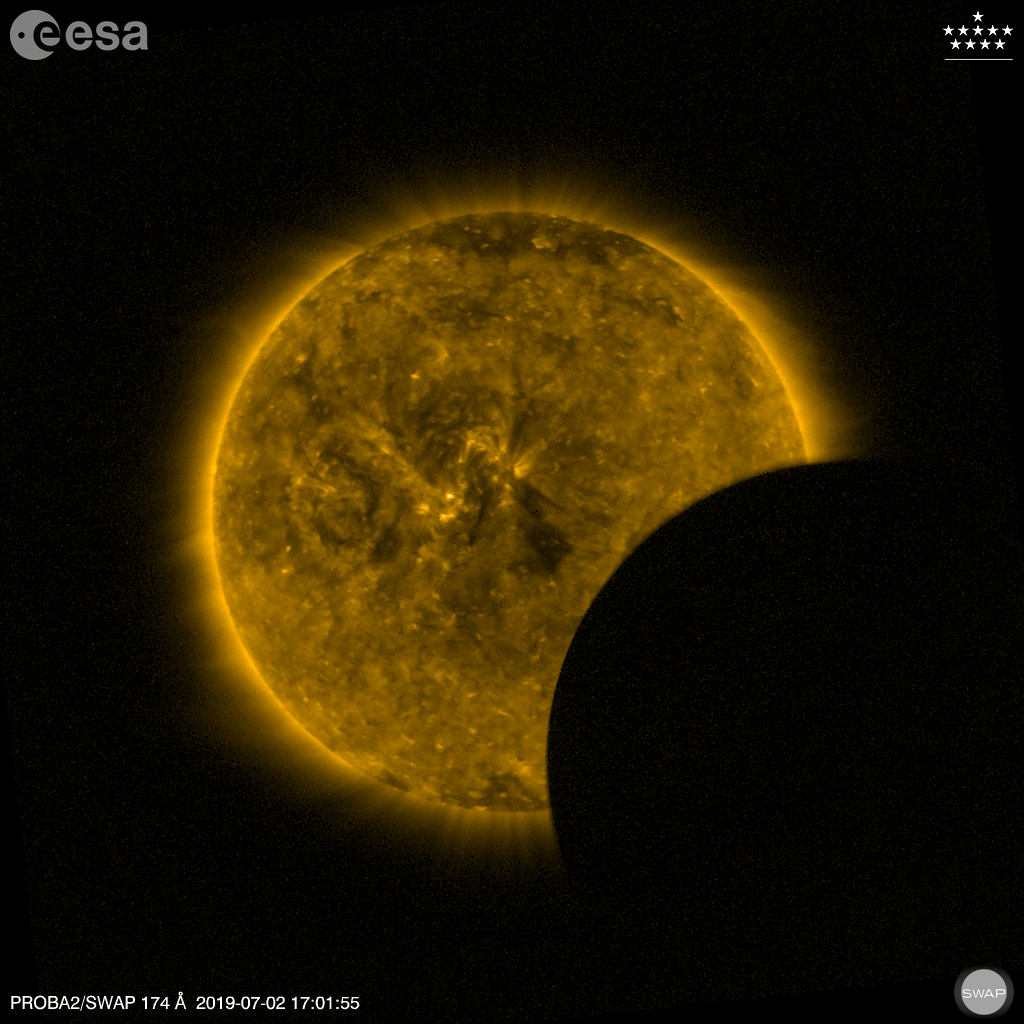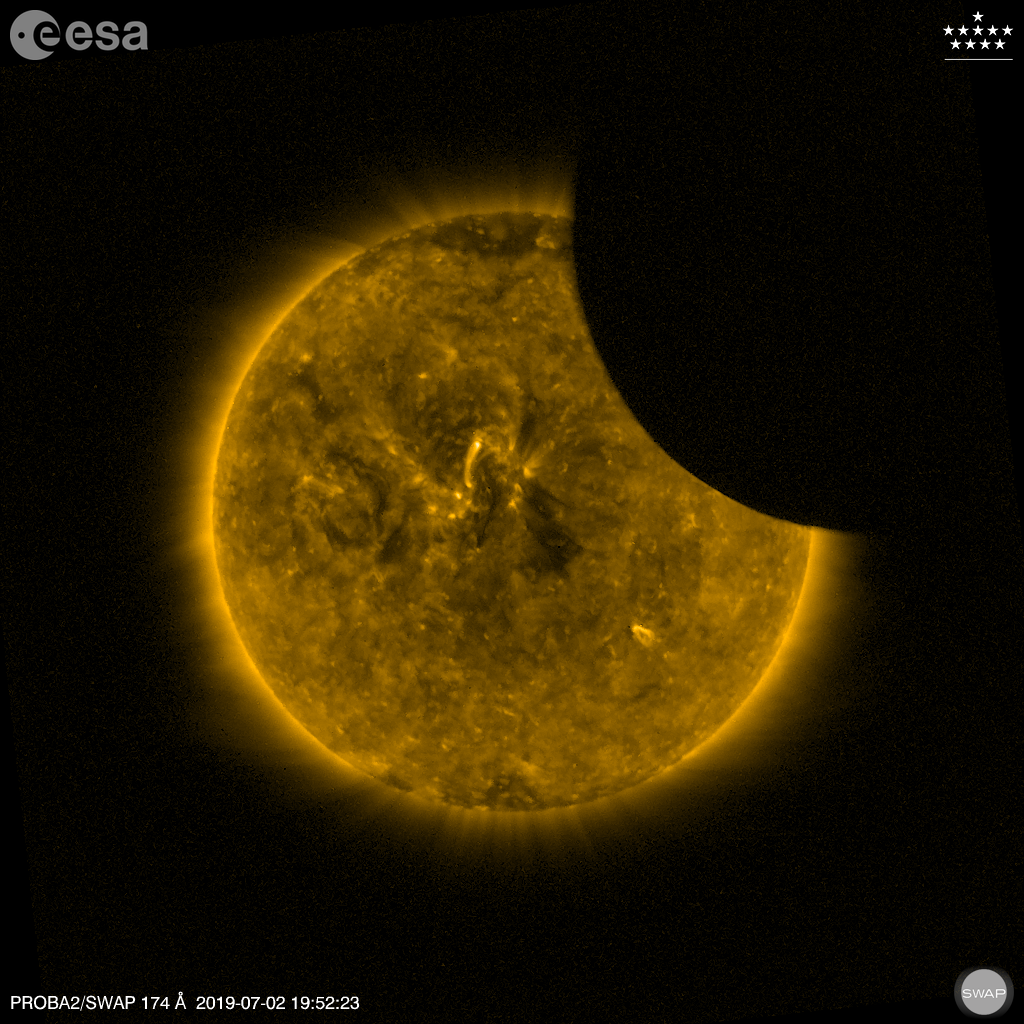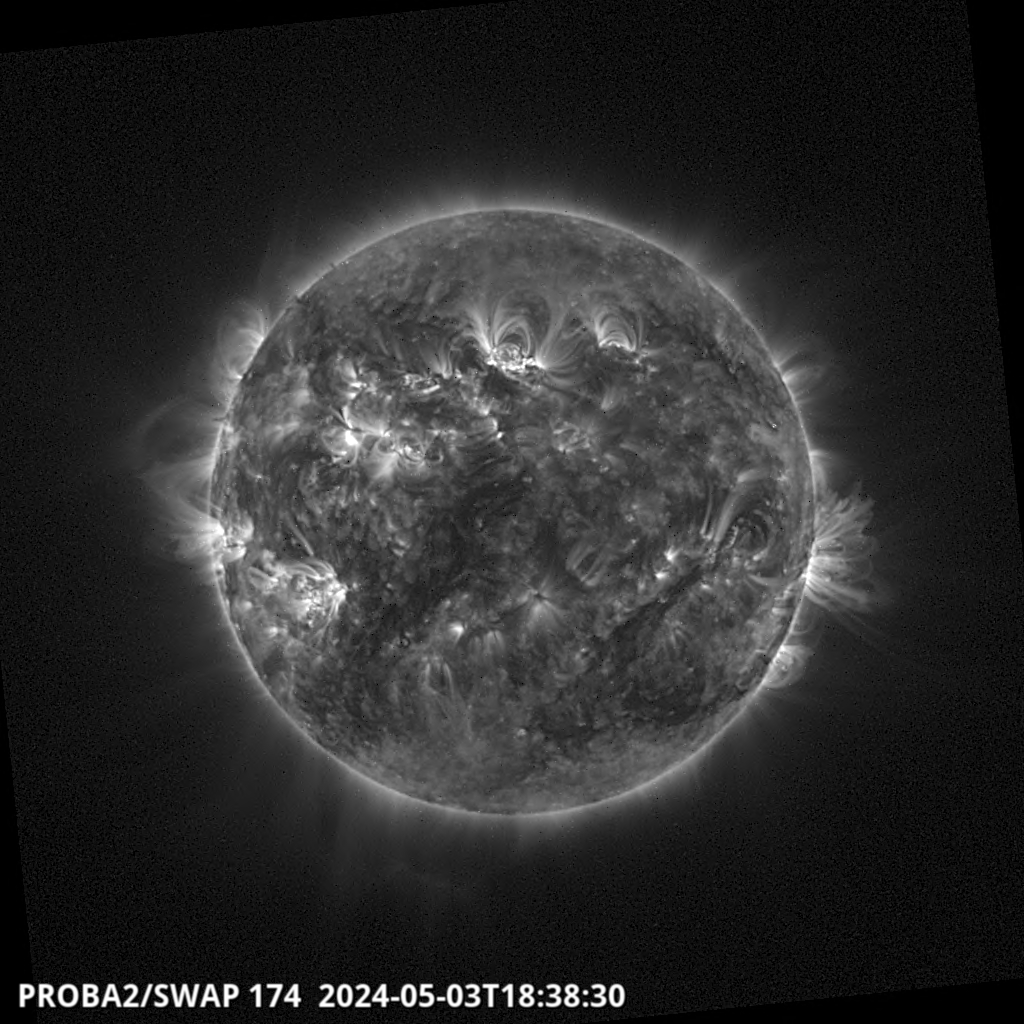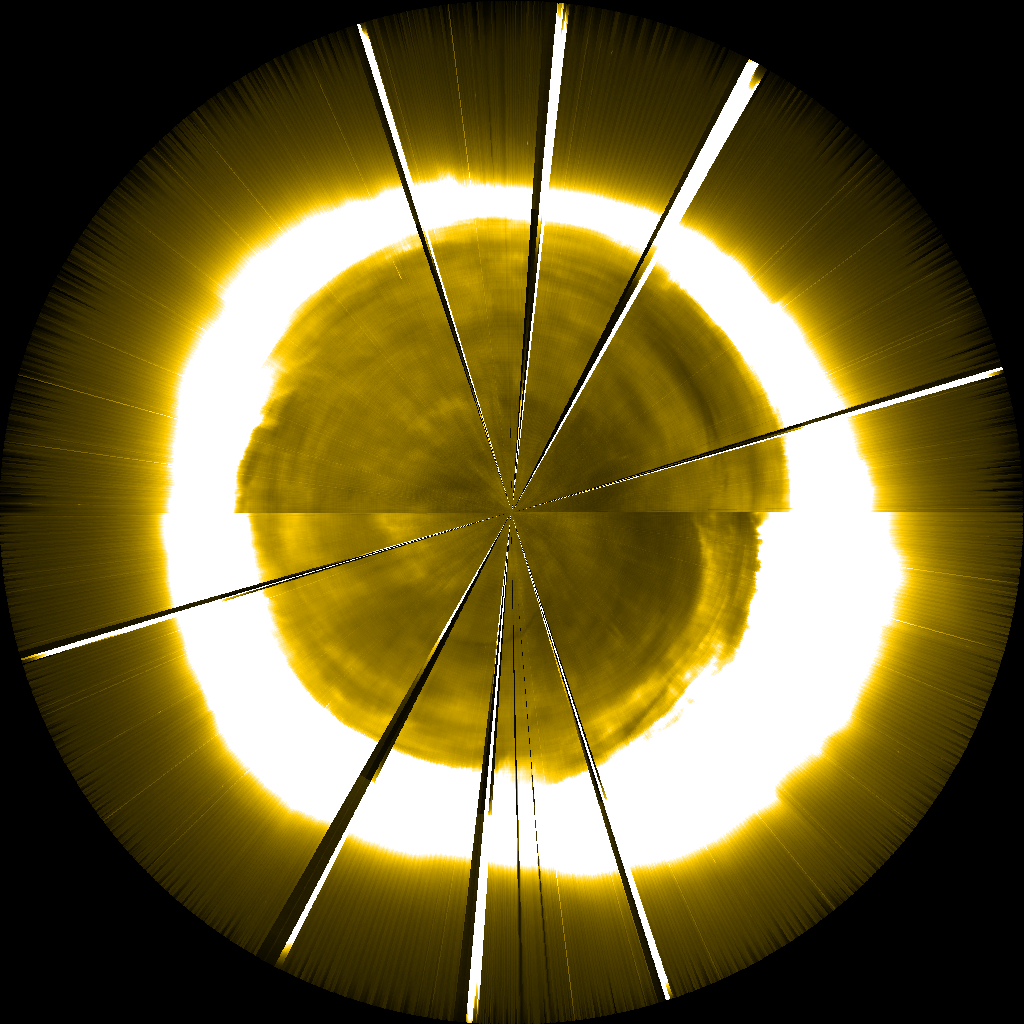 On July 2, 2019 the so-called Great South American Eclipse took place. The total eclipse path ran over parts of Chile and Argentina, where the Moon was seen to move in front of the Sun and blocked the sunlight out completely. At the same time neighboring countries were able to see a partial eclipse. This is the only total solar eclipse of 2019.
On July 2, 2019 the so-called Great South American Eclipse took place. The total eclipse path ran over parts of Chile and Argentina, where the Moon was seen to move in front of the Sun and blocked the sunlight out completely. At the same time neighboring countries were able to see a partial eclipse. This is the only total solar eclipse of 2019.
This eclipse was visible not from Belgium, yet we watched it closely with the Belgian PROBA2 satellite. PROBA2 did not simply see one eclipse: the satellite orbits the Earth so quickly that, between 16:53 UT and 21:33 UT, it was able to observe the eclipse 4 times before the Moon had completely traversed the solar disk. A movie simulating the view of the SWAP instrument can be found
here. Notice also that from PROBA2's point-of-view around half of the solar disk was covered in the final transit.
SWAP Data of the Eclipse
During this eclipse, SWAP took the usual high cadence observations of the Sun. We produced our typical sets of calibrated PNG images (with logos and timestamp, with timestamp only, and without logos or timestamp), as well as movies of the event.
Selected SWAP images of the four passages of the Moon during the Great South American Eclipse.
All the movies and images of the eclipse have been collected in
dedicated directories on our webpages. This directory also contains a specially selected SWAP image to promote the eclipse. This is the image with the largest part of the Sun occulted by the Moon. During this eclipse, PROBA2 was passing through the
South Atlantic Anomaly at the time of the largest occultation. In this region the PROBA2 spacecraft is exposed to higher levels of radiation. The increased flux of energetic particles falling on the SWAP detector is the cause for all the bright dots and streaks in the eclipse images.
LYRA data of the eclipse
LYRA also scheduled a special campaign: for this occasion, it switched on its so-called "calibration unit" (unit 1) in addition to the nominal one (unit 2). The calibration unit has been used sporadically over the mission. Hence, it has been mostly preserved from the ageing effects that affect the nominal unit, in use for almost 10 years. In particular, it allowed clear observations of the eclipse with its Lyman-alpha (120-123 nm) and its herzberg (190-222 nm) channels, which have both experienced a strong degradation on the nominal unit.
The radiation associated to the transit through the South Atlantic Anomaly also caused an increase of noise in the LYRA data, which is particularly well seen in the observations by the Zirconium channel during the third and fourth passes in the eclipse zone.

Normalized observations by LYRA during the four passes in the eclipse zone. The colors correspond to the observations by the four channels of LYRA: red = Lyman-alpha, green = Herzberg, blue = Aluminum, black = Zirconium
The observations by unit 1 are stored in the LYRA directory.
Data Use Policy
All PROBA2 images and movies used in outreach and the media should be credited to "ESA/ROB". Additional information about the terms of use for PROBA2 data is available on the PROBA2 website.
Contacting the PROBA2 Team
All requests for media comments, data assistance, or planning requests can be directed to the SWAP and LYRA teams via
swap_lyra@oma.be.
 On July 2, 2019 the so-called Great South American Eclipse took place. The total eclipse path ran over parts of Chile and Argentina, where the Moon was seen to move in front of the Sun and blocked the sunlight out completely. At the same time neighboring countries were able to see a partial eclipse. This is the only total solar eclipse of 2019.
On July 2, 2019 the so-called Great South American Eclipse took place. The total eclipse path ran over parts of Chile and Argentina, where the Moon was seen to move in front of the Sun and blocked the sunlight out completely. At the same time neighboring countries were able to see a partial eclipse. This is the only total solar eclipse of 2019.










